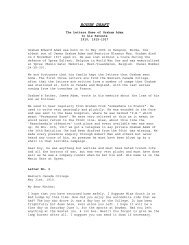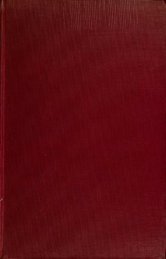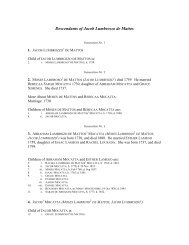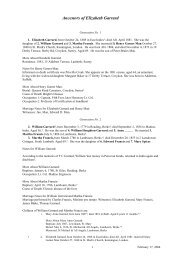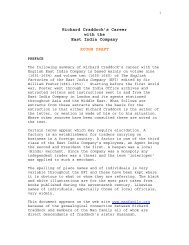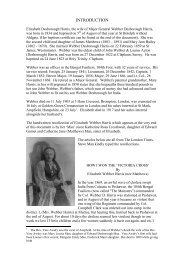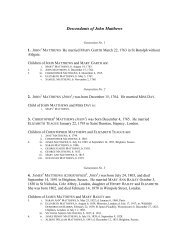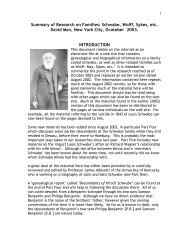Norman Leslie Falcon. 29 May 1904-31 May 1996 A. J. Martin; P. B. ...
Norman Leslie Falcon. 29 May 1904-31 May 1996 A. J. Martin; P. B. ...
Norman Leslie Falcon. 29 May 1904-31 May 1996 A. J. Martin; P. B. ...
- No tags were found...
Create successful ePaper yourself
Turn your PDF publications into a flip-book with our unique Google optimized e-Paper software.
<strong>Norman</strong> <strong>Leslie</strong> <strong>Falcon</strong>171Committee. It seemed that as he grew older he felt more at home in the RGS than in theGeological Society. His interest in the Middle East led to his organizing and leading the RGSexpedition to Musandam in 1971-72 at the age of 67. This expedition is regarded as one of theSociety's most successful in recent times. He included in the party geologists, biologists,archaeologists, ethnographers and surveyors. He later told A.J. <strong>Martin</strong> that he would like to seea core-hole drilled in the sea floor of one of the Musandam rias, as such a location might provideevidence of the Pleistocene, possibly catastrophic, flooding of the Arabian Gulf. As a result ofthe Musandam expedition he was invited to join the Imperial College expedition to the IranianMakran where he was able to retrace country he had first mapped in 1936 with J.V. Harrison.<strong>Norman</strong> was also a member of many other societies, all reflecting his interest in the naturalsciences, the oil industry, geography and archaeology. He was a member of the BritishAssociation from 1930 and in 1967 served as President of Section C Geology. Others includedFellowship of the Institute of Petroleum, and memberships of the Geologists' Association, theAmerican Association of Petroleum Geologists, the Petroleum Exploration Society of GreatBritain, the Royal Central Asian Society and the Royal Institution. He strongly supported thePetroleum Exploration Society of Great Britain and frequently attended meetings, where hisachievements were virtually unknown to most of the younger members.Rather like an iceberg the bulk of <strong>Norman</strong>'s publications are not visible as he 'buried most ofhis research in confidential reports' (President, Geological Society 1963). Nevertheless he'did amass a substantial corpus of published work' (Larminie 1997) and the citationaccompanying his election to the Royal Society states that he was 'distinguished for hisresearches in tectonics and stratigraphy in connection with the exploration for oil'. It isunfortunate that these surveys were never published for they contain numerous importantdiscussions on Iranian geology.On becoming Chief Geologist, <strong>Norman</strong> decided to publish the Zagros Mountain mapping.The maps were presented in two series, their publication coinciding with the InternationalGeological Congresses of 1956 and 1964. These became his most important publications andremain the standard geological reference maps for south-west Iran. The first series publishedin 1956 at the 20th Congress in Mexico City was at a scale of 1: 1000000 and covered southwestIran on a set of six sheets. A more detailed series of the same area at a scale of 1:250000was presented in a folio of 16 sheets at the 22nd Congress in Delhi in 1964. Each map wasaccompanied by cross-sections and stratigraphic notes. Additionally the 1 :250000 series wasaccompanied by a separate text giving a brief overview of the stratigraphy and structure thatsupplemented the sheet notes. The two series embody the essentials of the whole Zagros project,consisting primarily of the work of Hanison and <strong>Falcon</strong>, and remain fundamental to any studyof the Zagros Range in particular and to basin development in general.He published a number of general papers dealing with the regional geology and the oilgeology of the Arabian Gulf area. Those dealing with the deeper structure of the area reflecteda particular interest. In this respect one of the most significant papers was 'Major earthflexuring in the Zagros Mountains of south-west Iran (7), which identified the north-southstructural cross-trends to the predominant north-westlsouth-east trend of the Zagros.His Presidential address (8) to Section C of the British Assoociation provided an important



